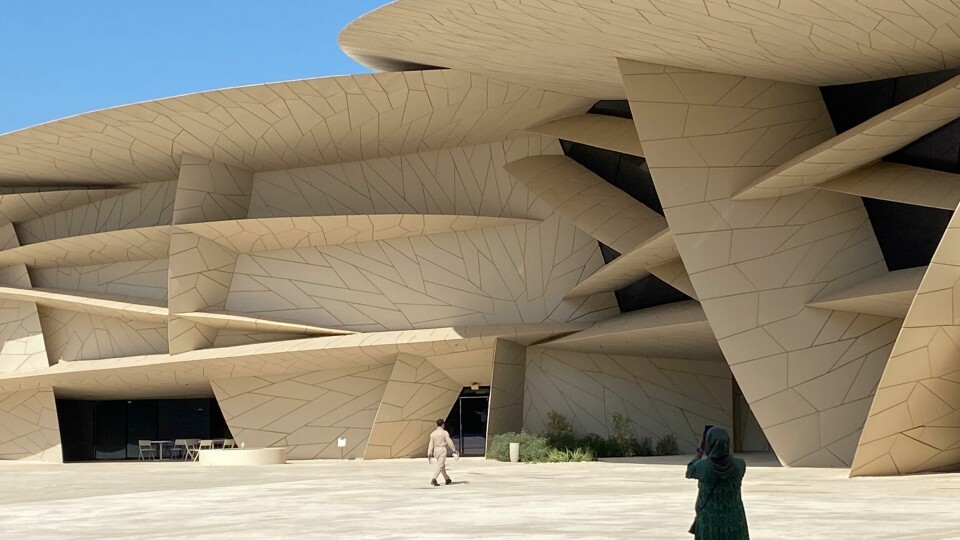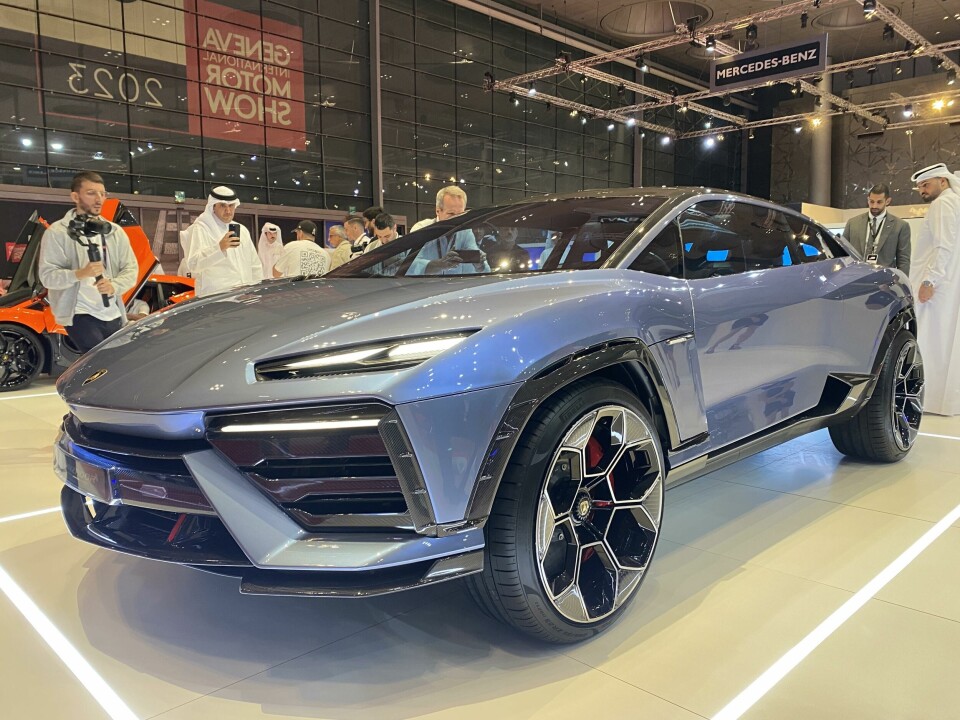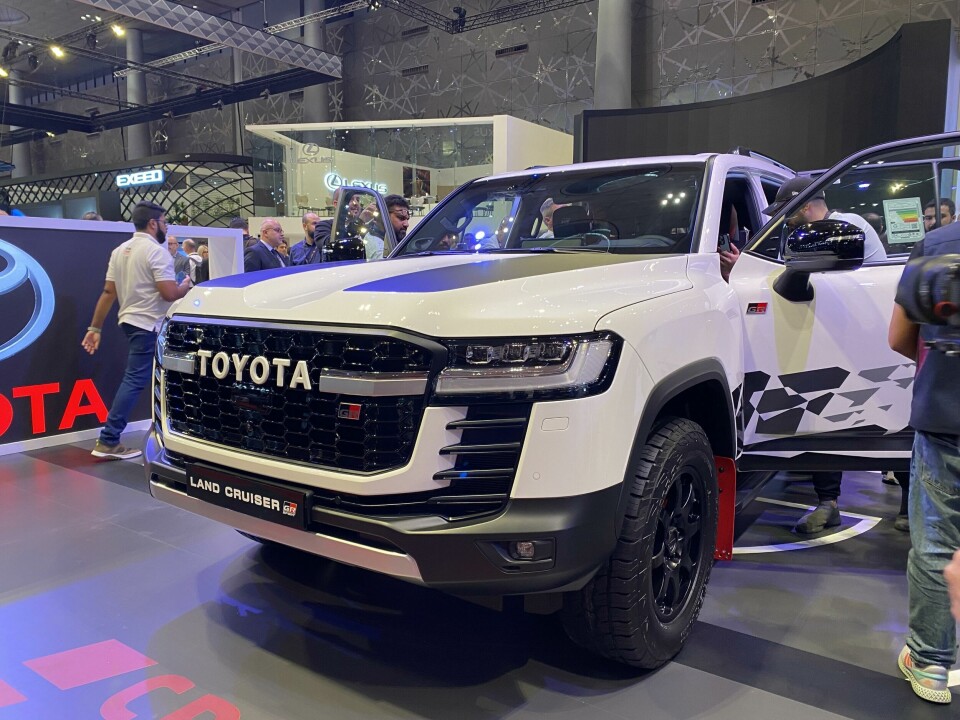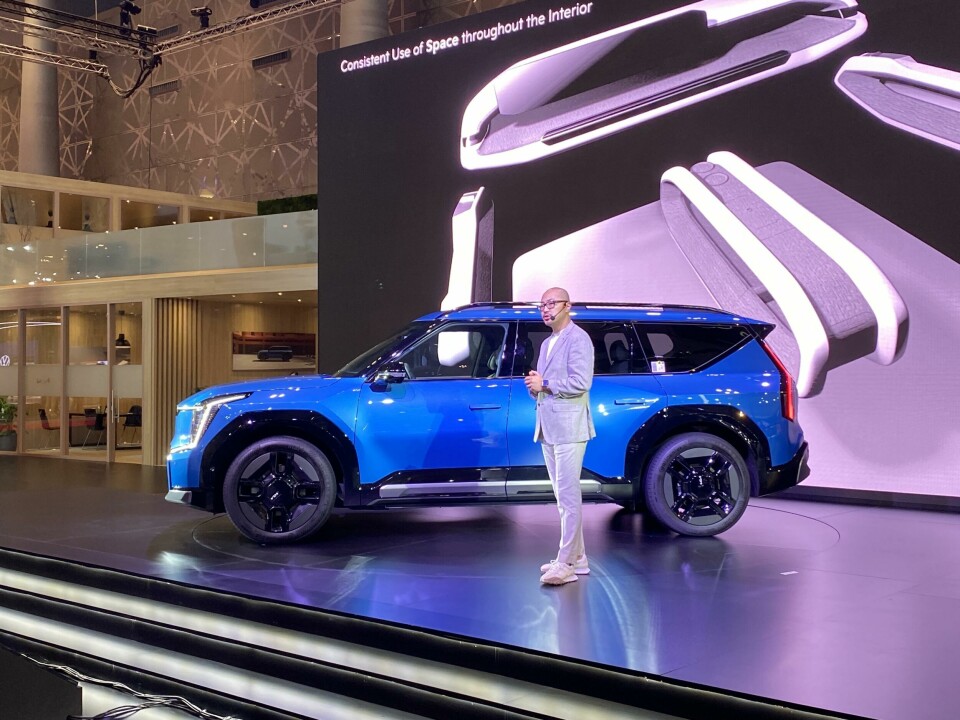
The Geneva Motor show goes to Doha
The Doha edition of the Geneva Motor Show made its debut in quietly impressive fashion. Car Design News was there to host the Future Design Forum at the stunning national museum. Here is our take on the show
Of all the recent motor show news, one particular story had people scratching their heads. The Geneva International Motor Show…in Doha. There is no doubt GIMS (Geneva International Motor Show) is hampered by the geo-specificity of its name. When your brand is wedded to a place, it is hard to pop up somewhere else without provoking quizzical looks.
And there was a perception, perhaps owing to the multiple false starts of the Geneva show itself during covid, that the show was permanently relocating to the Middle East. Not the case. The intention is to host the Doha edition every other year while the main show will return to Switzerland in 2024.
How compelling a proposition is the Doha show? There was certainly a concerted effort from both GIMS and the Qatari government to create an impact. A representative from the Ministry of Tourism opened the event declaring the country’s intent to become the leading tourist destination in the Middle East by 2030. In a country dominated by the car, the motor show naturally forms part of that journey.

The timing, held to coincide with the Formula 1 Grand Prix, reflected broader ambitions. Ditto the activities happening away from the convention centre: dune buggies in the desert at the fantastically offbeat Outpost resort; a Parade of Excellence (read supercars) on the Lusail boulevard; and the Future Design Forum hosted by Car Design News at the spectacular National Museum of Qatar. More on that later.
The vaguely monstrous Lanzador is a jacked up, performance car that looks like it could rip across the desert with the alacrity of a particularly lithe camel in full flight at the Battle of Aqaba
As for the auto show itself, there were 20 or so original reveals, but of the region-specific variety. Toyota, which has deservedly cornered the market in this part of the world with its virtually indestructible Land Cruiser, showed off a special edition of the venerable off-roader, while there were local reveals from Volksagen (Tiguan, Touareg and Terramont) and sister brand Audi turned up with the SQ8. This being the spiritual home of the hypercar it was no surprise to see Porsche and Lamborghini stands. The latter brought with it the vaguely monstrous Lanzador – a jacked up, performance car that looks like it could rip across the desert with the alacrity of a particularly lithe camel in full flight at the Battle of Aqaba.

Design directors, however, were in short supply. Kia’s rising star Teck-Koun Kimwas on stand to unveil the EV9, and former McLaren design boss Rob Melville — who’s been keeping a profile lower than an MI6 agent since he moved to Saudi Arabia to join Ceer — was spotted among the crowds (CDN interview to follow soon).

The principal reason CDN was in Doha was to host the Future Design Forum at the incredible National Museum of Qatar, where we invited a handful of designers to discuss the future of hypercars and luxury respectively. Self-confessed petrol head Sasha Selipanov, Guy Burgoyne and Dan Darancou VP of design at Qiantu took on the hypercar debate while Young Kwang Nam, Bentley’s senior interior designer, Pininfarina’s CCO Felix Kilbertus and Car Design Research director Sam Livingstone discussed luxury.
The hypercar panel was nothing if not lively with Darancou and Selipanov disagreeing on how the future might look: Darancou’s vision of highly customised individual products augmented by technology jarred with Selipanov’s desire to experience high velocity in the physical world: “A neanderthal punch to the gut,” is how the Georgian designer put it.
There was one moment during the discussion that should give all hypercar brands pause for thought. Selipanov, something of an iconic figure to petrolheads, expressed his passion for combustion engines married to manual gearboxes and was met with a spontaneous round of applause. Not everyone is on board with the shift to electric, particularly those in a country whose wealth is borne from the oil industry.
Luxury is always a tricky subject in as much as the concept always needs definition before any argument can get traction. Whereas experiential design via the advancement of technology can be an easy catch-all position, it was heartening to hear Kilbertus speak up in favour of ornament in design. The spirit of Adolf Loos would surely be appalled, but in a world where minimalism dominates, perhaps we need to find some joy in decoration. Livingstone, meanwhile, put forward the idea that future luxury will be a great deal more specific to regional culture.
The final discussion centred around the National Motor Museum – an OMA-designed building that will, with VCUArts, Qatar act as a catalyst for automotive design education rather than an archive of automotive history. The audience was treated to a video address by Marcello Gandini who was represented in person by daughter Marzia and who read a personal letter from the great man to the audience. Gandini is planning a series of masterclasses for the VCUArts students.
While there is no denying the scale of Qatari ambitions, GIMS Doha as motorshow needs to carve out its own identity – recreating Geneva in the desert is probably not the way to go. Identities come with time and this is only the first year. On a trickier note, (and though I would dearly love not to engage with politics, seemingly impossible these days) there are elements of Qatari law that run counter to liberal values.
GIMS CEO Sandro Mesquita’s line was understandable: “We don’t do politics. We are a motor show.” And that may be, but to borrow a phrase from Greek politician Pericles, “You might not be interested in politics, but politics is interested in you.” Whether moral scruples will prove any sort of obstacle to future success, we will have to wait and see. And let’s be honest, questionable human rights records have not stopped the automotive industry from doing business in Russia and China, for example.
In the show’s favour is a unique car culture in the Middle East: where else do you see battered offroad vehicles rub shoulders with sleek hypercars? That, coupled with undoubted financial clout, might tip the scales favourably.



